The old fisherman
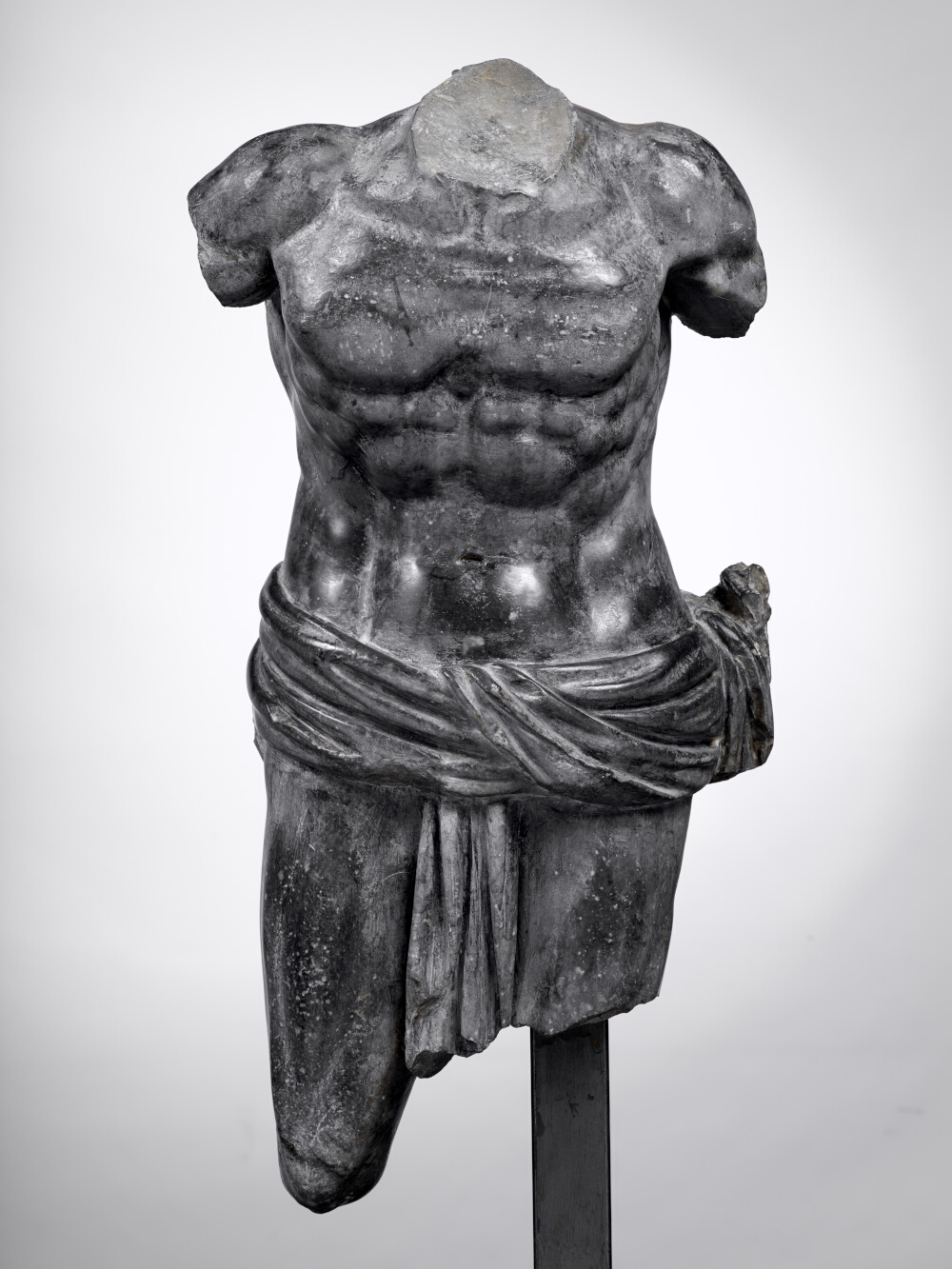
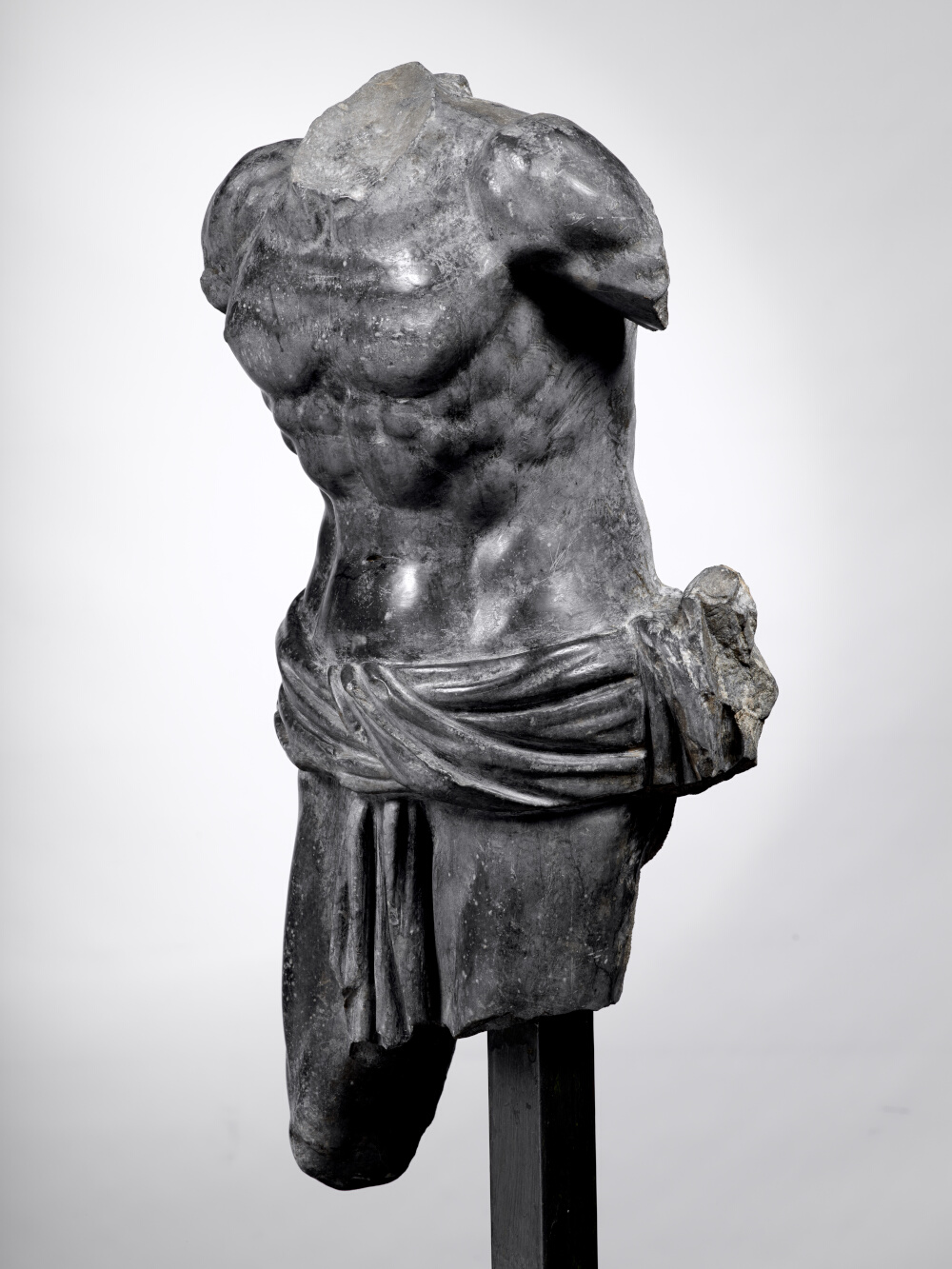
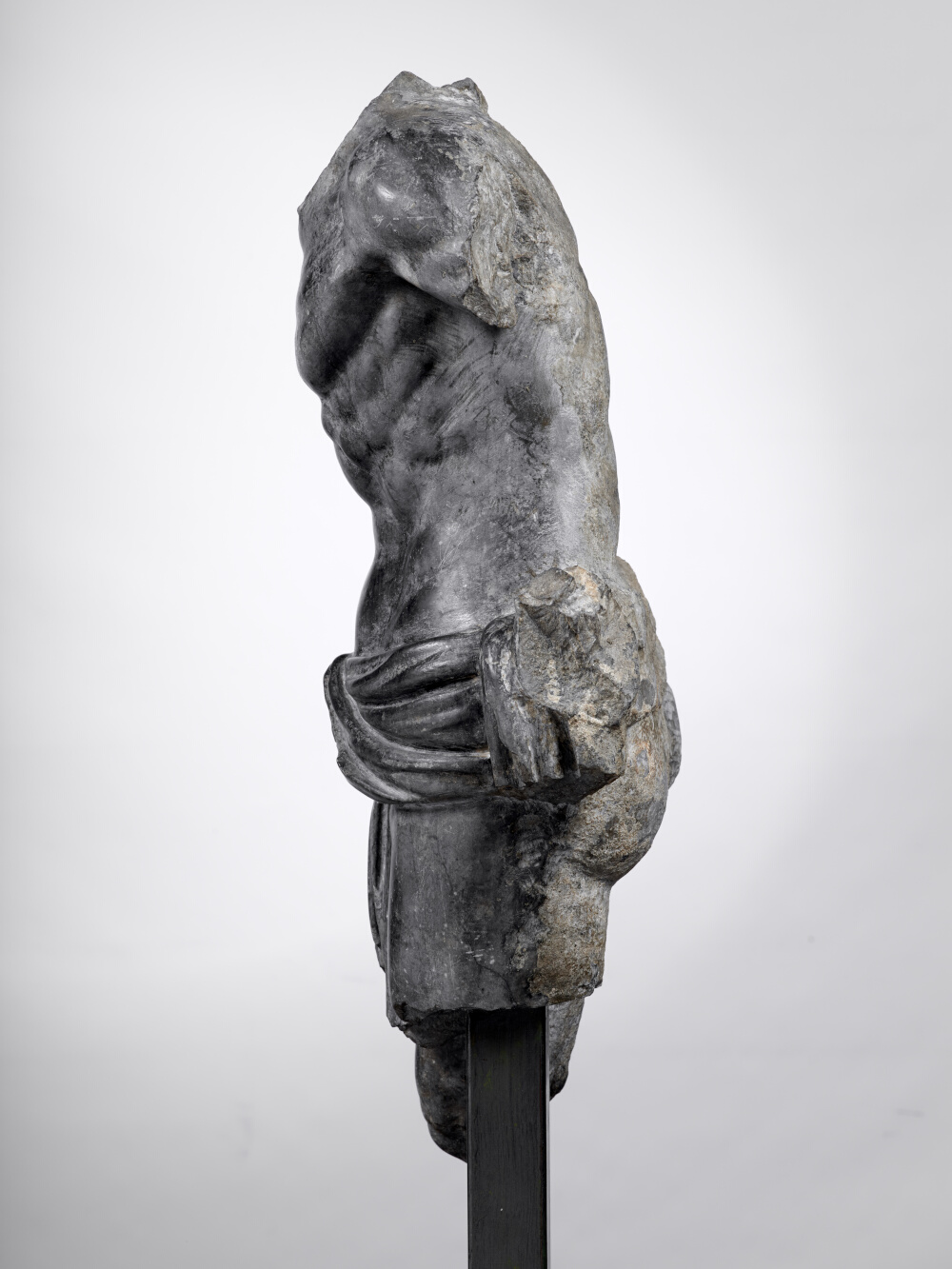
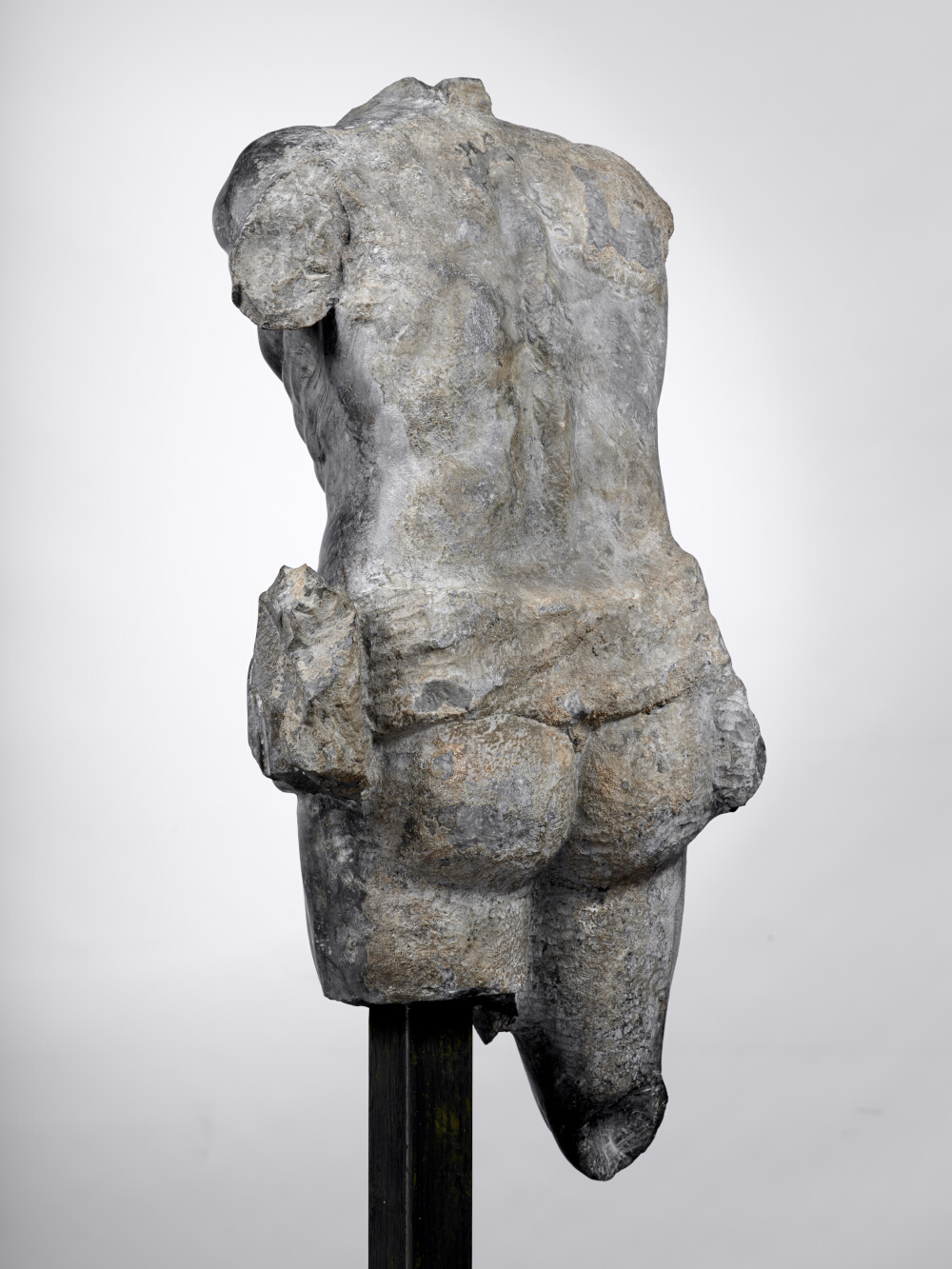
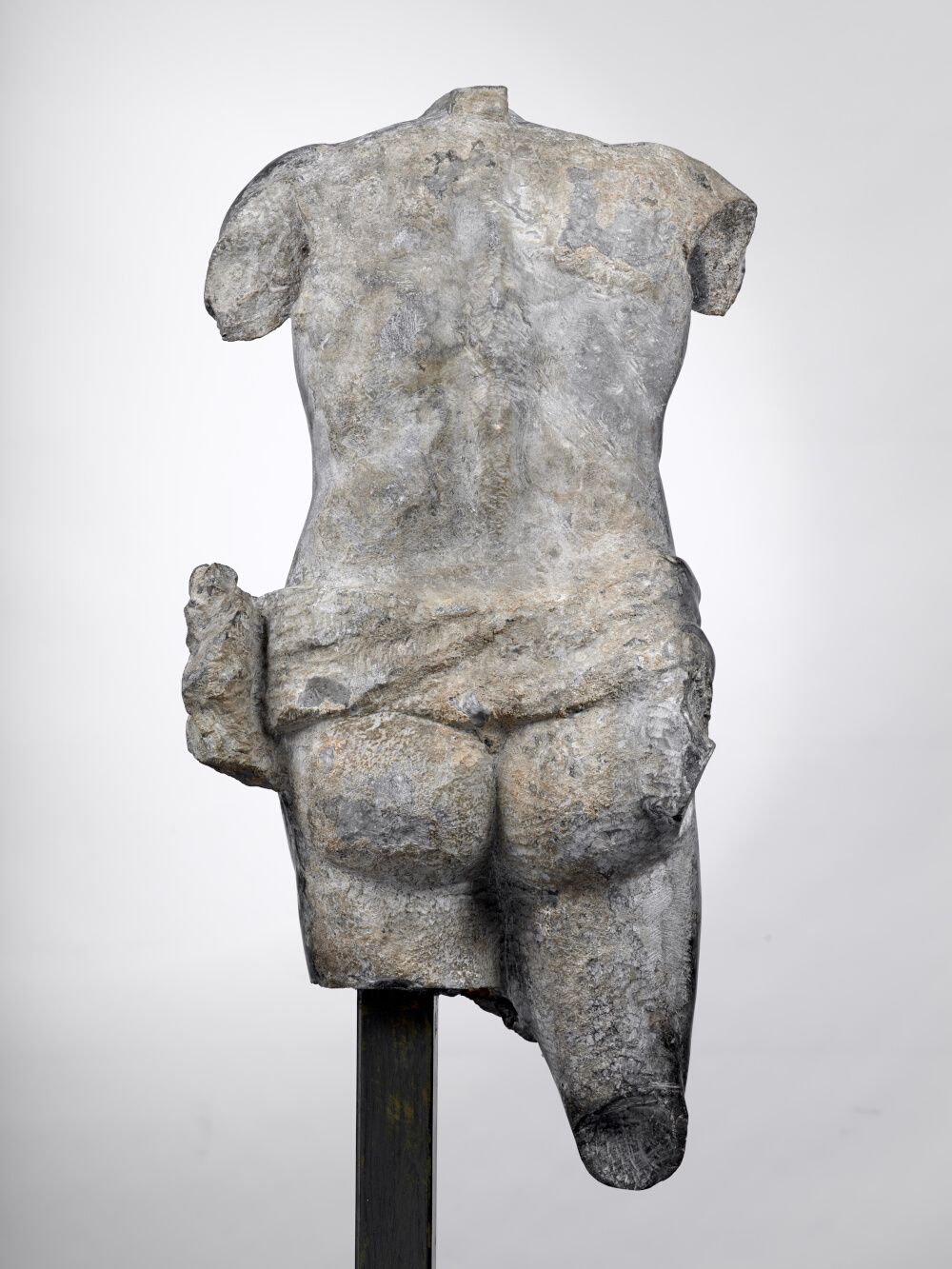
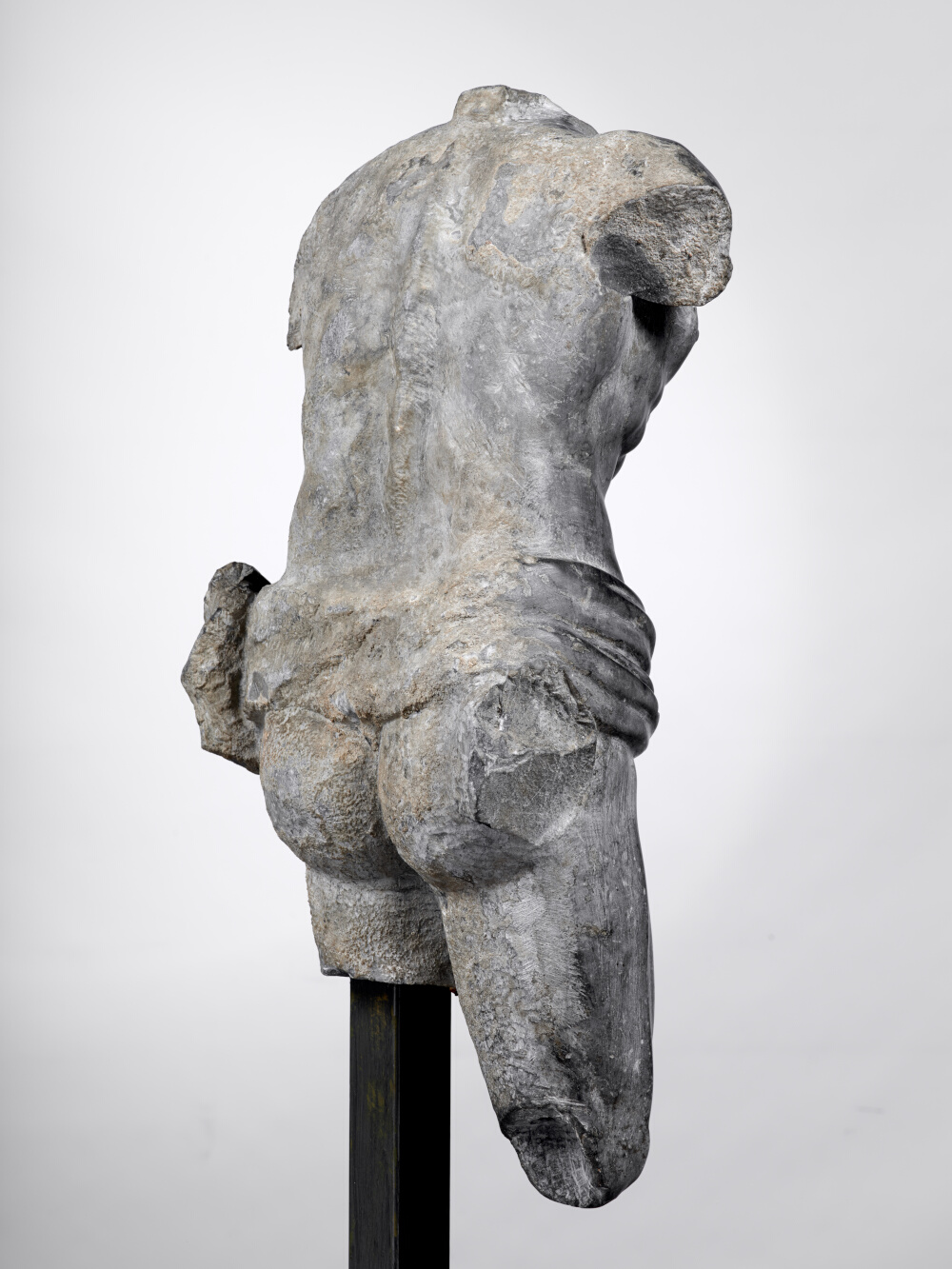
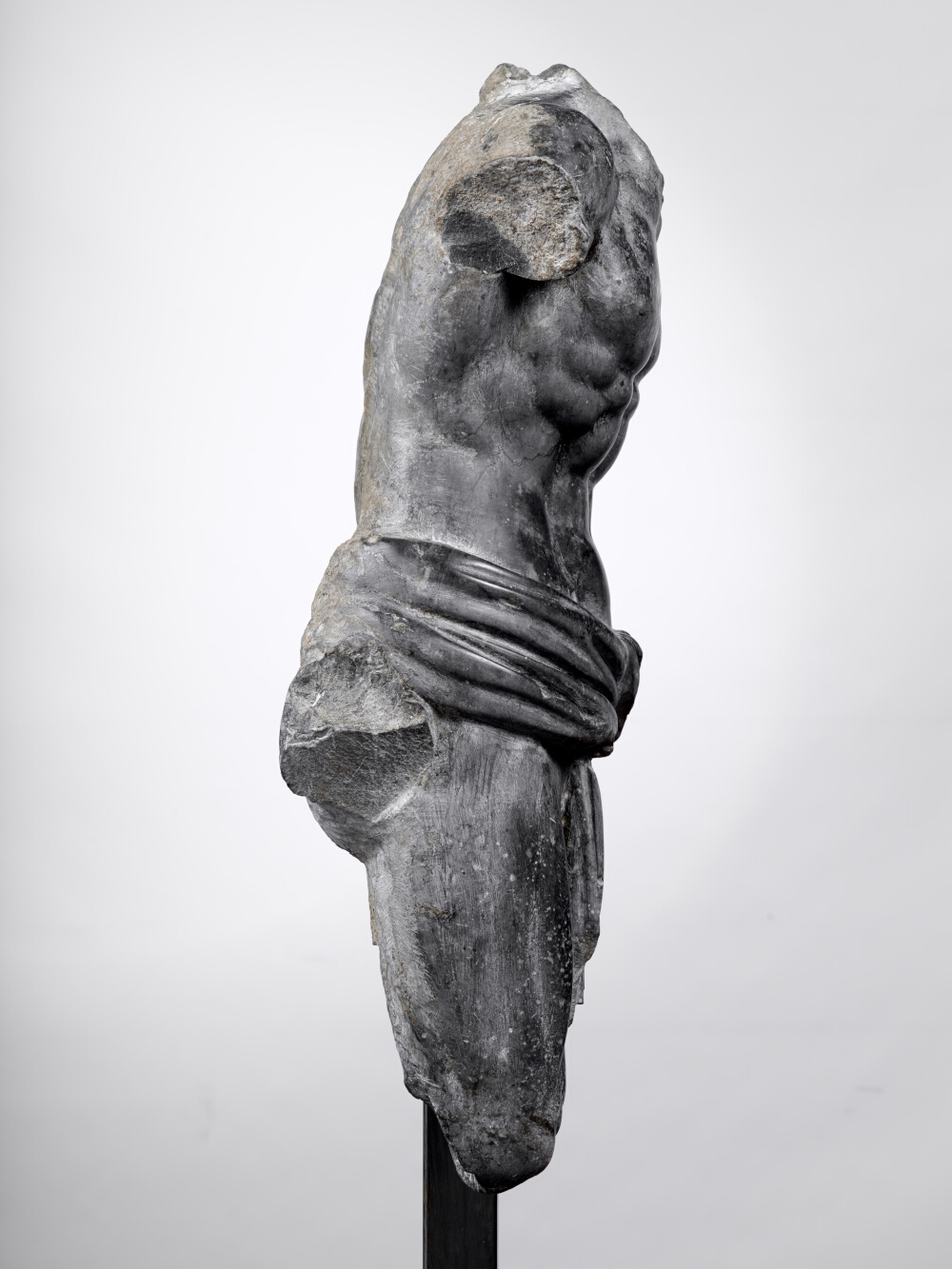
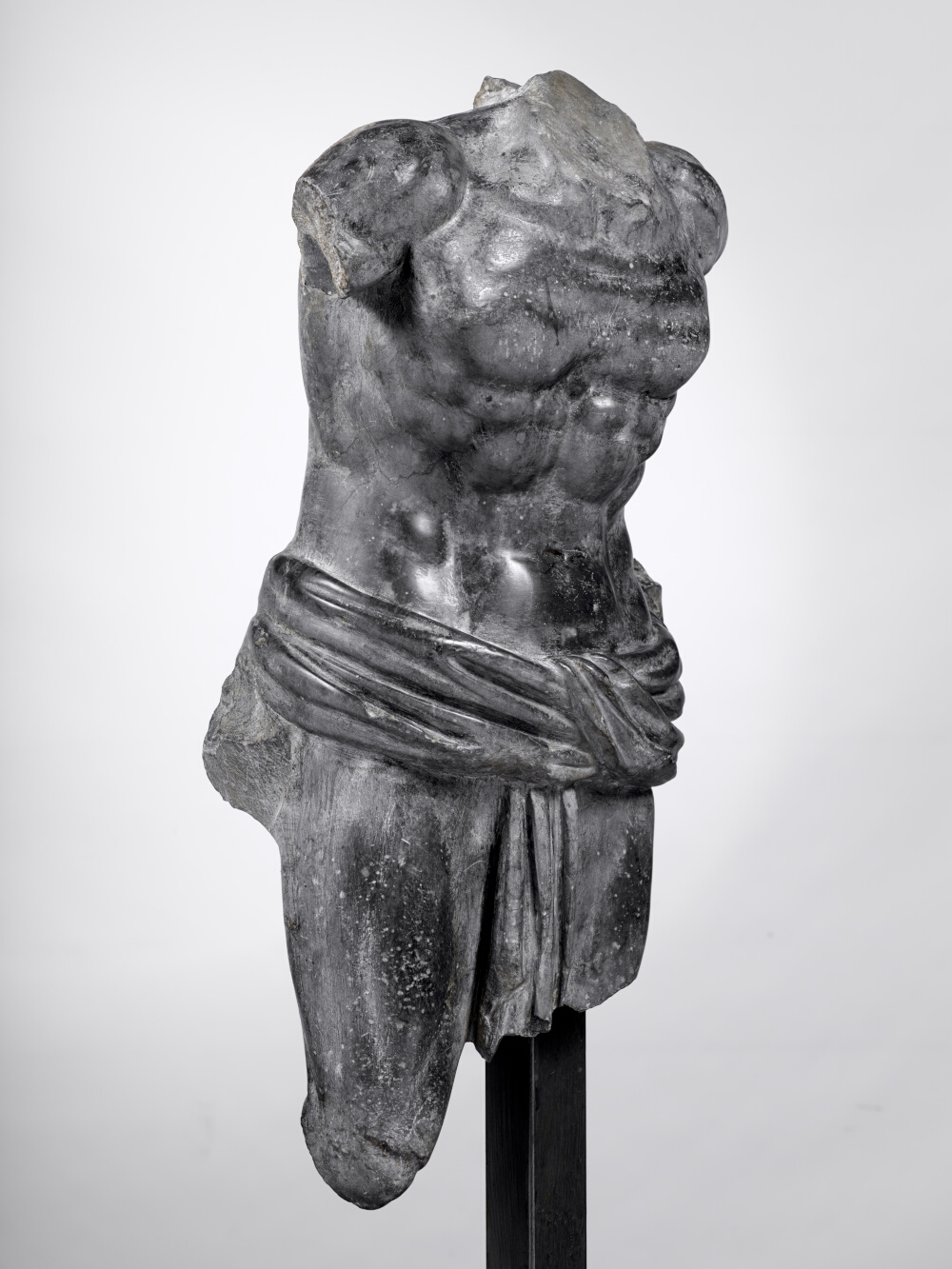
- Date de création
- 3rd-first third of the 4th century(?)
- Material
- Göktepe marble (Turkey)
- Dimensions
- H. 52 x l. 27 x P. 16 (cm)
- Inventory number
- Ra 46
- Photo credits
- Daniel Martin
Sculpture from the Hellenistic period ostensibly reflected an interest in people of low status, and the old and suffering. This uncompromising truth was particularly noticeable between the 3rd and 1st century BC in the Greek world. Yet the crudeness of this focus on those who generally remain invisible is tempered by the use of luxurious materials usually restricted to a small circle. Suffering, humility and street activities thus form a strange contrast with the rarest and most expensive marbles.
Several other replicas of the fisherman’s prototype are known today. The most famous remains the version in the Louvre, known as the « Dying Seneca », from the former Borghese collection. But in the context of medium-size statuary comparable to the statue in Villa Chiragan, one work in particular, unearthed in Aphrodisias (Turkey), bears uncanny similarities to our own specimen. The white marble replica now kept in the Altes Museum in Berlin, which is remarkable for its quality and the polish of its marble, suffers in comparison: the effect of surprise and fascination afforded by the black stone of the statues discovered in Chiragan and Aphrodisias being lost in this white version N. Hannestad, Tradition in Late Antique Sculpture : Conservation, Modernization, Production (Acta Jutlandica. Humanities Series), Aarhus, 1994, p. 135, 138-39 ; M. Bergmann, Chiragan, Aphrodisias, Konstantinopel : zur mythologischen Skulptur der Spätantike (Palilia), Wiesbaden, 1999, p. 55..
According to Léon Joulin, Alexandre Du Mège is said to have found an arm holding a fragment of the fishing net. This object has not been found among the hundreds of remains of small and medium-sized statuary unearthed in Chiragan. Conversely, a foot resting against the base of a tree, also in black marble, is still lingering in the museum’s reserves, and its dimensions do not seem to be an obstacle to it belonging to this statue. What remains of a supporting structure at the back of the neck suggests that a tree trunk may have been associated with the figure. This is a characteristic of small and medium-sized late oriental statuary well represented in the workshops of Aphrodisias. This connection with the Micrasian workshops of late Antiquity should also be considered when taking into account the strong aesthetic contrast between the back of the sculpture, where the larger parts of the body, including the particularly prominent backbone, have been coarsely rendered and left unpolished, whereas the front part of the body, where the anatomy is defined but relatively streamlined, is characterised by the care that has been taken in polishing the stone N. Hannestad, Tradition in Late Antique Sculpture : Conservation, Modernization, Production (Acta Jutlandica. Humanities Series), Aarhus, 1994, p. 135.. The connections with Aphrodisias and oriental workshops are therefore just as convincing here as they are for the medallions of the gods, or the reliefs of Hercules.
Now famous thanks to twenty-five replicas that date back to the imperial period, the original from the 3rd century BC, was likely made of bronze, the glistening appearance of which is evoked by the glossy black marble. This old man, dressed only in a loincloth, is seen making modest offerings to the gods F. Queyrel, La sculpture hellénistique , Tome 1 : Formes, thèmes et fonctions (La sculpture grecque , 3; Les manuels d’art et d’archéologie antiques), Paris, 2016, p. 315.. The smaller replica in the Musée Saint-Raymond features offset folds of loincloth, one side of which falls rather stiffly to conceal the genitals. With some of the other replicas, the old man’s genitalia are exposed, in accordance with the pathos in vogue in Hellenistic times: Chiragan’s statue has therefore been toned down, making it less brutal and more decorative in nature. Thanks to this simple yet formal modification, the sculpture has a different meaning, adapted as it is to the place for which it was commissioned at a given time. The same Greek iconographic model thus underwent a series of transformations that altered its meaning, depending on the workshop that produced it.
P. Capus
Bibliography
- Baratte 2001 F. Baratte, « Exotisme et décor à Aphrodisias : la statue du jeune Noir de l’ancienne collection Gaudin, » Monuments et mémoires de la Fondation Eugène Piot, 80, 1, pp. 57–80. p. 71
- Bergmann 1999 M. Bergmann, Chiragan, Aphrodisias, Konstantinopel : zur mythologischen Skulptur der Spätantike (Palilia), Wiesbaden. p. 55
- Cazes et al. 1999 D. Cazes, E. Ugaglia, V. Geneviève, L. Mouysset, J.-C. Arramond, Q. Cazes, Le Musée Saint-Raymond : musée des Antiques de Toulouse, Toulouse-Paris. p. 111
- Clarac 1841 F. Clarac, Musée de sculpture antique et moderne ou Description historique et graphique du Louvre et de toutes ses parties : des statues, bustes, bas-reliefs et inscriptions du Musée royal des Antiques et des Tuileries, et de plus de 2500 statues antiques … tirées des principaux musées et des diverses collections de l’Europe… accompagnée d’une iconographie égyptienne, grecque et romaine…. Tome II, Paris. p. 586
- Du Mège 1835 A. Du Mège, Description du musée des Antiques de Toulouse, Toulouse. no 133
- Du Mège 1828 A. Du Mège, Notice des monumens antiques et des objets de sculpture moderne conservés dans le musée de Toulouse, Toulouse. no 149
- Espérandieu 1908 É. Espérandieu, Recueil général des bas-reliefs de la Gaule romaine, 2. Aquitaine, Paris. p. 62, no 952
- Hannestad 1994 N. Hannestad, Tradition in Late Antique Sculpture : Conservation, Modernization, Production (Acta Jutlandica. Humanities Series), Aarhus. p.135
- Joulin 1901 L. Joulin, Les établissements gallo-romains de la plaine de Martres-Tolosane, Paris. fig. 200B, 212 E
- Lebègue 1889 A. Lebègue, « Une école inédite de sculpture gallo-romaine, » Revue des Pyrénées et de la France méridionale, p. 28. p. 10
- Rachou 1912 H. Rachou, Catalogue des collections de sculpture et d’épigraphie du musée de Toulouse, Toulouse. no 46
- Roschach 1892 E. Roschach, Catalogue des musées archéologiques de la ville de Toulouse : Musée des Augustins, Musée Saint-Raymond, Toulouse. no 46
- Slavazzi 1996 F. Slavazzi, Italia verius quam provincia : diffusione e funzioni delle copie di sculture greche nella Gallia Narbonensis (Aucnus), Naples. fig. 29
- Rey-Delqué 1975 M. Rey-Delqué, « Le ‘Vieux Pêcheur’, réplique d’un type hellénistique : statue trouvée dans la villa de Chiragan à Martres-Tolosane et conservée au Musée Saint-Raymond de Toulouse, » Pallas. Revue d’études antiques, 22, 4, pp. 89–95. p. 89 à 95
To cite this notice
Capus P., "The old fisherman", in The sculptures of the roman villa of Chiragan, Toulouse, 2019, online <https://villachiragan.saintraymond.toulouse.fr/en/ark:/87276/a_ra_46>.